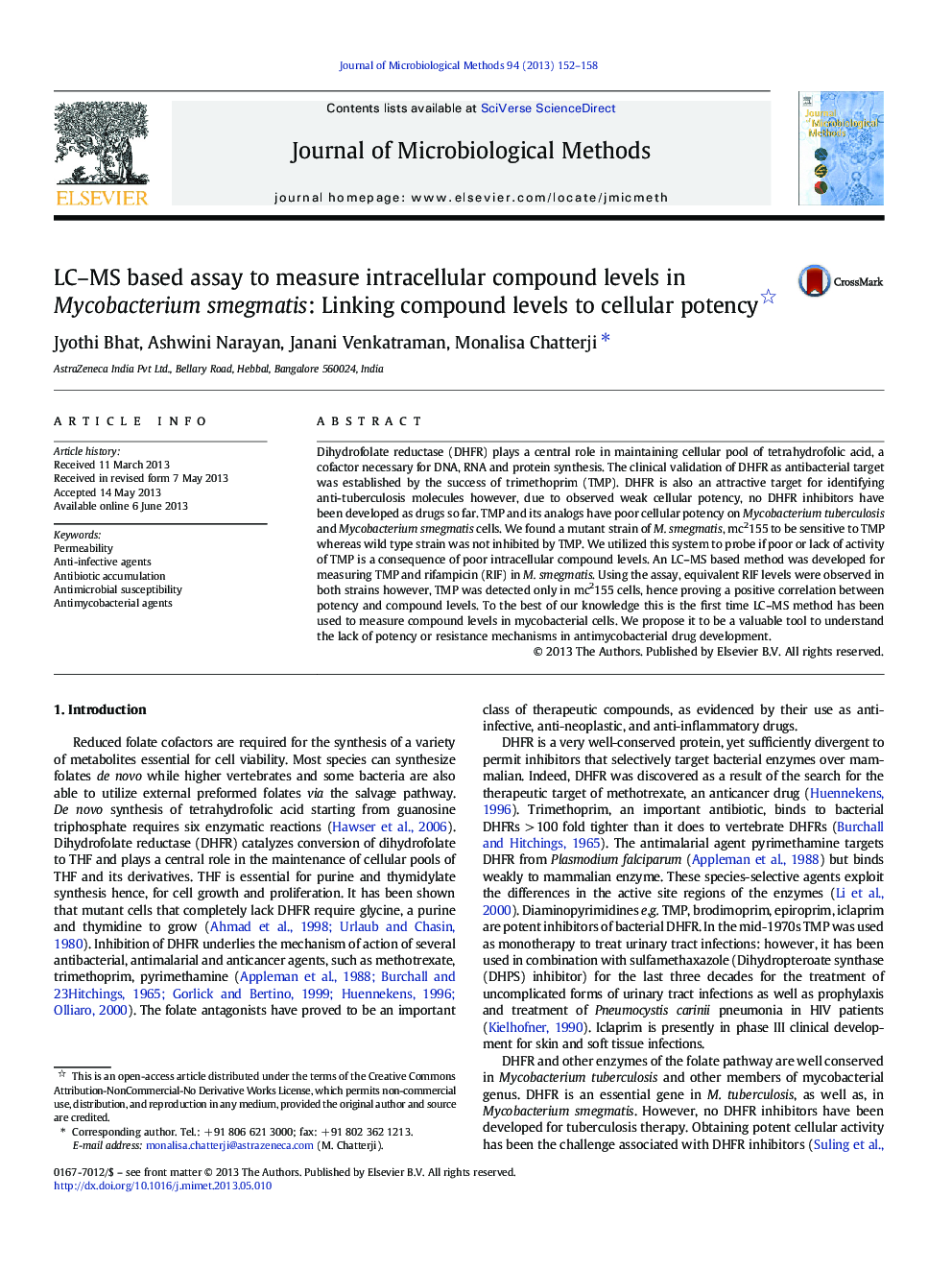| Article ID | Journal | Published Year | Pages | File Type |
|---|---|---|---|---|
| 10889533 | Journal of Microbiological Methods | 2013 | 7 Pages |
Abstract
Dihydrofolate reductase (DHFR) plays a central role in maintaining cellular pool of tetrahydrofolic acid, a cofactor necessary for DNA, RNA and protein synthesis. The clinical validation of DHFR as antibacterial target was established by the success of trimethoprim (TMP). DHFR is also an attractive target for identifying anti-tuberculosis molecules however, due to observed weak cellular potency, no DHFR inhibitors have been developed as drugs so far. TMP and its analogs have poor cellular potency on Mycobacterium tuberculosis and Mycobacterium smegmatis cells. We found a mutant strain of M. smegmatis, mc2155 to be sensitive to TMP whereas wild type strain was not inhibited by TMP. We utilized this system to probe if poor or lack of activity of TMP is a consequence of poor intracellular compound levels. An LC-MS based method was developed for measuring TMP and rifampicin (RIF) in M. smegmatis. Using the assay, equivalent RIF levels were observed in both strains however, TMP was detected only in mc2155 cells, hence proving a positive correlation between potency and compound levels. To the best of our knowledge this is the first time LC-MS method has been used to measure compound levels in mycobacterial cells. We propose it to be a valuable tool to understand the lack of potency or resistance mechanisms in antimycobacterial drug development.
Related Topics
Life Sciences
Biochemistry, Genetics and Molecular Biology
Biotechnology
Authors
Jyothi Bhat, Ashwini Narayan, Janani Venkatraman, Monalisa Chatterji,
